One of the best ways to look at drug addiction is to think of it as an uninvited guest. No one wants a substance use disorder to come into their lives and settle in for an extended stay. No one desires this any more than they would like to have diabetes, heart condition, or any other serious health issue. But addiction, nonetheless, imposes its presence, gradually making itself at home and overstaying its welcome, refusing to leave even when the negative consequences become apparent.
Comparable to an uninvited guest who overstays their welcome, addiction's entry is unassuming, but its effects are far-reaching and damaging. Let's delve into how drug addiction slips into your life, disrupts your peace, and why evicting this invisible enemy often requires professional help.
Substance abuse sometimes enters one's life like an uninvited guest. Other times, it's invited by one and unwanted by another (family members, spouses, etc.). Either way, the initial encounter often takes the form of curiosity or experimentation.
An individual may try a substance once to see what it's like—much like they'd entertain a guest for a brief moment out of politeness. The initial encounter may not immediately raise alarm bells. However, this phase marks the beginning of a journey that can lead to hidden consequences.

This stage is marked by the brain's response to the addictive substance or behavior, where the initial curiosity or experimentation gives way to a heightened sense of pleasure and comfort. It can be likened to when an uninvited guest feels at ease and gradually becomes more comfortable in their surroundings.
Alcohol or drug use activates the brain's reward system, releasing neurotransmitters like dopamine that create pleasure and euphoria. Just as the uninvited guest appreciates the comforts of their new surroundings, the brain starts associating the substance or behavior with a pleasurable experience.
As the brain experiences the surge of pleasure from the substance or behavior, it reinforces one's inclination to repeat the action. This reinforcement parallels the process of a guest finding specific amenities in their host's house that make them want to stay longer. The brain begins to form connections between the stimulus (the addictive substance or behavior) and the pleasurable feelings, leading to a desire to repeat the experience.
At this point, the individual starts to use the addictive substance or engage in the behavior more frequently. The pleasurable sensations felt during the initial encounters become a sought-after source of comfort, leading to an increased desire to recreate those feelings.
The guest-turned-intruder's presence becomes more noticeable as the addiction disrupts an individual's life. What was once an occasional indulgence becomes a more frequent occurrence. The substance or behavior is no longer a choice but a compelling need. Responsibilities and relationships become overlooked or compromised as the individual's attention becomes increasingly consumed by destructive habits.
As the uninvited guest takes over, addiction tightens its grip. Just as the guest starts dictating the household's schedule, addiction dictates the individual's life. The regular dose of pleasure the brain receives from the addictive substance or behavior creates a reliance that's difficult to break. One may try to quit or reduce their addictive behavior, but withdrawal symptoms, cravings, and deeply ingrained patterns can make this a daunting task.

Some uninvited guests might promise to leave but then linger longer. And that's similar to what happens when one is in pursuit of breaking the cycle of addiction. They might successfully abstain for a period, but the allure of the addictive substance or behavior and triggers like stress or social situations can lead them back into old habits. These relapses can be discouraging and make breaking free even more challenging.
The rewiring of the brain caused by addiction makes it extremely difficult to quit without professional help. Addiction affects multiple aspects of a person's life, from brain chemistry to behavior, emotions, and decision-making. Seeking assistance from addiction specialists and professionals can help understand these changes, develop effective strategies, and provide the necessary support to reclaim one's life from the grip of addiction.
The struggle to break free from addiction echoes the challenge of convincing an unwelcome guest to leave. Despite the individual's sincere attempts, addiction often clings tenaciously, leading to cycles of relapse and self-criticism. Experts use different treatment options that might involve a combination of therapies and medications to help treat addiction. These may include:
Behavioral therapies are evidence-based approaches that modify addiction-related behaviors, thoughts, and emotions. These therapies address the psychological aspects of addiction and help individuals develop healthier coping strategies. Examples of behavioral therapies include:
MAT combines medication with behavioral therapy to treat substance use disorders. Medications like Methadone, Buprenorphine, Naltrexone, Acamprosate, and Disulfiram help manage withdrawal symptoms, reduce cravings, and stabilize brain chemistry. MAT is particularly effective for opioid and alcohol addiction.
Addiction affects not only the individual but also their loved ones. Family therapy involves the family members in the treatment process to address interpersonal dynamics, communication, and support systems.
Holistic treatments consider the individual as a whole, focusing on physical, mental, and emotional well-being. These approaches complement traditional therapies and promote overall health, and include:
The road to recovery is characterized by rediscovery, growth, and renewal. Much like reclaiming a space after the departure of an unwanted guest, individuals in this phase work on rebuilding their lives by joining support groups, nurturing relationships, embracing healthier habits, and creating a future filled with positivity and meaning. The process involves personal development, self-compassion, and a commitment to a life free from the shadow of addiction, demonstrating the resilience and strength of the human spirit in overcoming challenges.
If you or someone you know is struggling with drug use, contact a healthcare professional, counselor, rehabilitation center, or addiction support helpline for guidance, assistance, and resources.
Drug testing has become a standard practice for many employers. Most of them perform drug screenings to ensure workplace safety, maintain a drug-free workplace, and, in some cases, comply with legal requirements.
While a drug screen can be an essential tool for employers to maintain workplace safety and productivity, it can also be a barrier for those in recovery from addiction. For these individuals, the fear of failing a drug test can discourage them from seeking employment that requires drug screening. And with recent layoffs and scarce employment opportunities, the pressure to find and maintain a job can be even more intense.
Luckily, many employment opportunities don't require drug screenings. These include jobs in the following fields:
While many other options exist, these job fields are the most likely to hire without drug tests. In fact, less than 4% of candidates drug test for this position. The reason is such jobs have minimal workplace risk and can be executed with some level of independence. Generally, these jobs need self-discipline, creativity, unique skill sets, and independence.
If you’re unemployed and looking for regular jobs, getting yourself off drugs is your best bet. This included marijuana in any form. Despite legalization, some employers might still want to test for THC. Weed testing detects the presence of the concentration of THC in your body. When you stay off drugs, you won’t have to limit your chances to companies that perform these screening tests. You can be free to find a job you love.
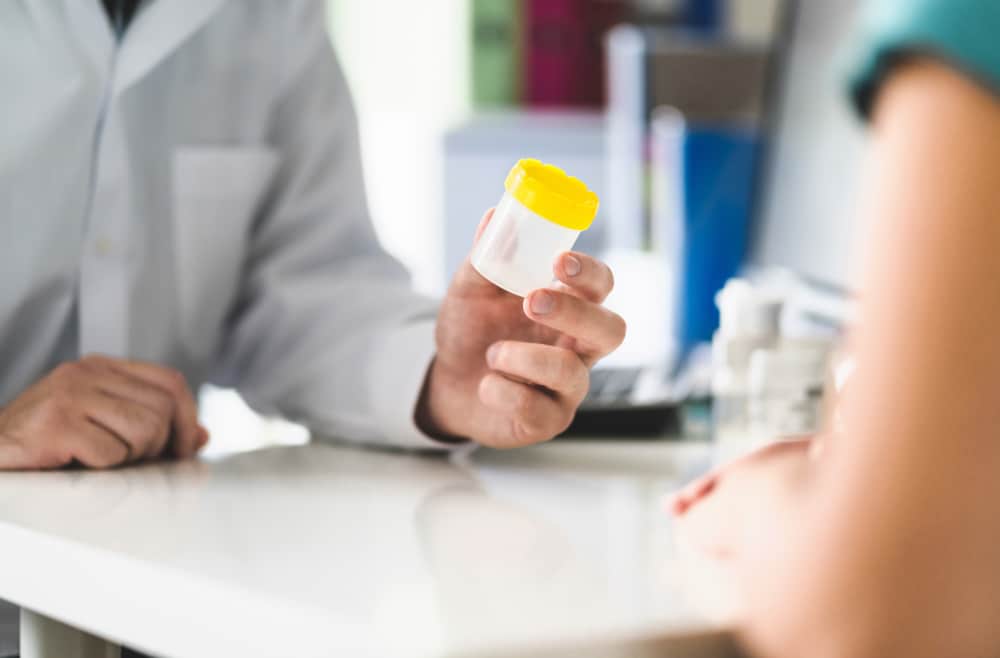
Here’s a list of companies that don’t drug test. What’s fascinating is that most of them are arguably the most successful companies.
This article will explore some of these job options at different levels. We’ll rank them from the highest-paying jobs to the least-paying ones based on the average annual salary. Note that these can also be an ideal side hassle if you’re an artist looking for work to supplement your art and relieve the stress of not having enough money.
Average annual salary of $31,000 (source)
A cashier is an entry-level job that involves handling transactions, processing payments, and providing customer service. As a cashier, you’ll be responsible for scanning items, totaling purchase costs, and collecting customer payments. You may also assist customers with questions and help resolve any purchase issues. Cashiers need to have basic math skills, good customer service skills, and be comfortable working with a cash register or point-of-sale system.
Average annual salary of $23,000
Your work as a dog walker will involve providing exercise, companionship, and ensuring their safety. You may work independently or for a pet care service company. This job typically requires a love for dogs, the ability to handle multiple dogs at once, and the physical ability to walk long distances. Dog walkers should also have good communication skills to interact with pet owners and knowledge of primary pet care, such as feeding, administering medication, and managing behavior.

Average annual salary of $23,000
Housekeeping mainly revolves around cleaning private residences or commercial properties, including hotels, resorts, private homes, and commercial buildings. Your work will typically involve vacuuming, dusting, cleaning bathrooms, changing linens, and doing laundry. As a housekeeper, you’ll need to have good attention to detail, the ability to work independently, and be physically able to perform the necessary cleaning tasks.
Average annual salary of $99,000
Your job as a real estate agent is to help people buy, sell, and rent properties. You'll need to have good communication and sales skills, as well as knowledge of the local real estate market.
Average annual salary of $82,000
As a general manager, you'll be responsible for overseeing the operations of a business or organization. This can include managing employees, creating budgets, and developing strategies to increase profitability.
Average annual salary of $63,000
As a film producer, you'll be involved in creating a movie or TV show, from developing the concept to hiring actors and crew members to oversee the post-production process.
Average annual salary of $48,525
Florists create and sell floral arrangements for various occasions, such as weddings, funerals, and special events. You'll need to have a good eye for design and knowledge of different types of flowers.
Average annual salary of $54,000
Interior designers work with clients to create functional and aesthetically pleasing spaces for homes, offices, and other buildings. You'll need to have a good eye for design and be able to work within a client's budget.
Average annual salary of $44,000
As a chef, you'll create menus, prepare food, and manage kitchen staff. Therefore, you should have a passion for food, good cooking skills, and the ability to manage a busy kitchen environment.
Average annual salary of $52,000
Your job as a journalist is to research and report on news and current events. This can include writing articles, conducting interviews, and investigating stories.
Average annual salary of $38,894
Personal trainers create personalized workout plans for clients and provide guidance and motivation to help them reach their fitness goals.

Average annual salary of $31,000
Cosmetologists provide various beauty services to clients, such as hair styling, makeup application, and nail care.
Average annual salary of $49,000
Photographers capture images for various purposes, such as weddings, events, and commercial campaigns. You'll need to have a good eye for composition and be skilled in using photography equipment.
Average annual salary of $27,386
Your job as a dog trainer is to train dogs and their owners to improve behavior and obedience. Essential skills for a dog trainer include a good understanding of dog behavior and the ability to communicate with owners.

Average annual salary of $89,000
Mobile application developers create, design, and develop smartphone, tablet, and mobile device applications. You would typically work to create user-friendly, efficient, and visually appealing apps that meet the needs of clients and users.
Average annual salary of $73,000
IT consultants provide advice and support to businesses and organizations in various areas of technology, such as software development, cybersecurity, network design, and information management. You would assess their needs, recommend solutions, and assist with implementation and training to help them achieve their technological goals.
Average annual salary of $71,000
Computer animators use specialized software to create digital images and animations for various media, including films, video games, and television shows. In a work setup, you’ll work with a team of animators and other artists to bring characters, objects, and environments to life using modeling, rigging, and texturing techniques.
Average annual salary of $66,000
Computer programmers write and test codes for software applications and systems. Your work will involve designing, developing, and troubleshooting software to ensure that it meets the needs of clients and users.
Average annual salary of $57,000
Copywriters and bloggers create written content for various mediums, such as books, articles, websites, and social media. You would research and write about various topics, often working with editors and other writers to refine your work and ensure that it meets the needs of clients and readers.
Average annual salary of $45,000
Graphic designers build visual designs and concepts for various media, such as advertising, branding, websites, and print materials. Your work is to create designs that communicate ideas, messages, and identities effectively.
Drug testing is not a requirement for all jobs. But specific industries have made it a standard practice to ensure safety and productivity. Some typical jobs that routinely drug test include federal jobs, military positions, law enforcement, healthcare professionals, transportation workers, construction workers, aerospace and defense workers, and educators.
Tranq, an animal sedative, is spreading through the United States illicit drug supply and is thought to be responsible for the surge in overdose cases. The drug is now posing a new threat in the country's ongoing battle against drug overdoses.
Tranq is appearing more frequently in synthetic opioids, particularly fentanyl, causing deaths and severe side effects. Although most jurisdictions don't routinely test for tranq in postmortem toxicology, the DEA estimates the drug was involved in at least 1,423 overdose deaths in the south and 1,281 in the Northeast in 2021. And while the full nationwide scope of overdose death involving the drug is unknown, surveys show deaths associated with tranq have spread westward across the US.
Tranq, also known as Xylazine or tranq dope, is a sedative used to tranquilize large animals during procedures and diagnostic testing. Initially, the drug was given for household pets, but it's now typically used for large animals like elk, cattle, sheep, and horses. The Food and Drug Administration (FDA) approved the drug in 1960 for animal use, but not humans.
Despite this, the drug has become increasingly common in the US illicit drug supply. It is now sold on the streets, usually mixed with other drugs like heroin, cocaine, alcohol, benzodiazepines, methadone, and fentanyl. According to officials, drug dealers and suppliers lace these drugs with Xylazine because it's powerful, cheap, and easy to get. So, in most cases, those who buy these street drugs may be using tranq dope unknowingly.
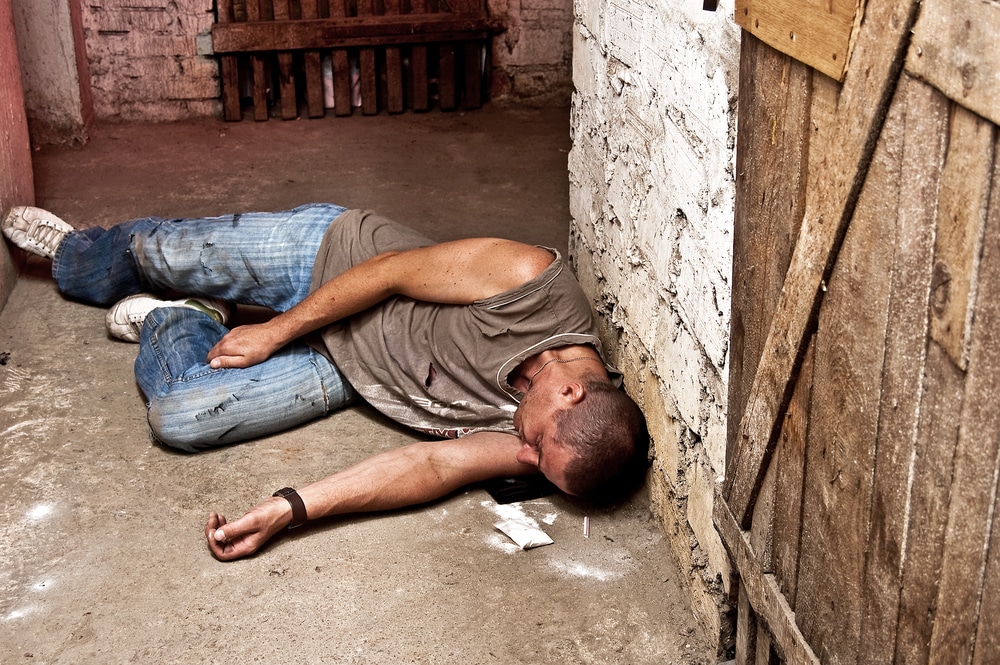
Now, drugs like heroin and fentanyl are dangerous enough on their own, but Xylazine is making them even more dangerous. Tranq is a powerful sedative meant for animals and can leave users unconscious for hours.
It also causes more complex and potentially more deadly overdoses. And the worst part is users cannot easily detect its presence in the drug supply. Fentanyl test strips that reliably measure fentanyl in street drugs can’t detect tranq presence.
In legal sales, Xylazine is sold directly through pharmaceutical distributors and online platforms for vets. It comes in solid and liquid form or preloaded syringes, with concentrations that match the weight and size of the species. It is not classified as a controlled substance, but people need a valid prescription from a licensed veterinarian to purchase it.
Those without licenses can still obtain tranq in powder and liquid forms through other online sites. These sites often have no association with the veterinary profession and do not require buyers to prove legitimate needs.
According to the DEA, a kilogram of tranq powder can go for as low as USD 6 to USD 20. At this low price, using tranq to lace other drugs may increase profit margins for drug dealers. And the psychoactive effects may also attract buyers looking for prolonged euphoric effects.
The first cases of Xylazine misuse were reported in Puerto Rico in the early 2000s through DEA reporting and lab analysis. But it's unclear when tranq first appeared in the illicit drug market in Philadelphia. Still, public health officials say that the drug seems to be concentrated in Philadelphia, making it the ground zero for tranq dope in the US.
Its uptick in the city's drug market is primarily due to its ability to enhance the potency and duration of a fentanyl high. This has a substantial effect considering fentanyl ranked first ahead of heroin as the city's opioid of choice.
According to researchers, tranq is in 91% of the fentanyl and heroin supply in Philadelphia, and the prevalence is heading west. Reports have also shown that the state of Michigan had an 87% increase in Xylazine-related deaths between 2019 and 2020. Other affected states include Maryland, Delaware, New Jersey, and New York, all of which have seen an increase in drug overdose deaths in 2021.
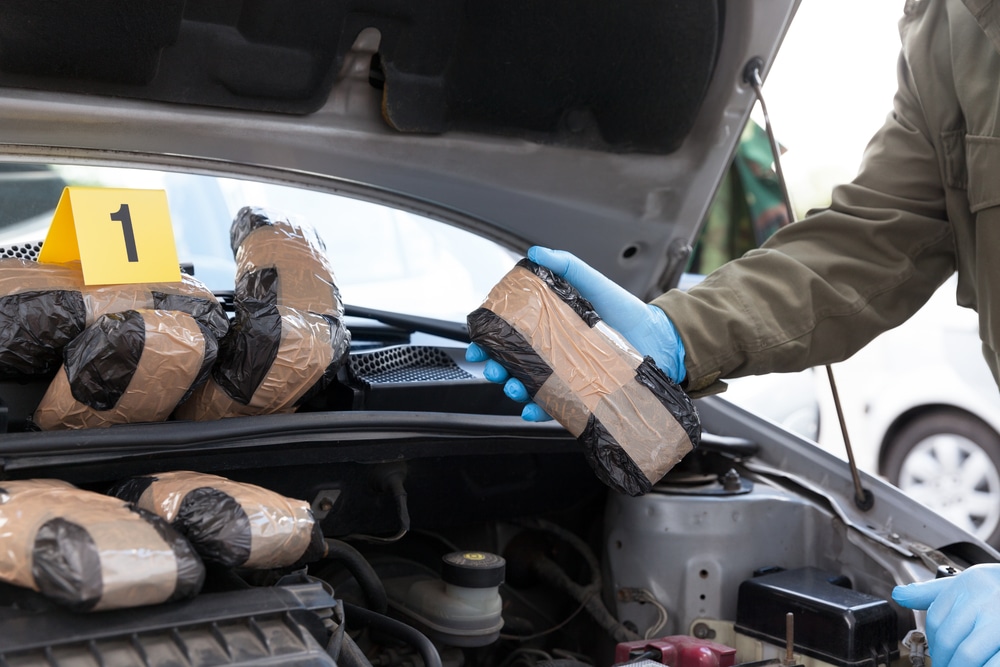
Tranq is a central nervous system depressant, so it slows down the process in the body's nerve cells. It causes drowsiness and lowers blood pressure, slows the heart rate and breathing to dangerously low levels. Mixing Xylazine and opioids like fentanyl can induce hours of sleep, making it harder to determine whether the user is experiencing an overdose. The risk of life-threatening overdose is also higher when tranq is mixed with other CNS depressants like benzodiazepines or alcohol.
Besides, tranq is highly addictive and can cause physical and psychological dependence. Regular use of the drug can lead to open wounds and skin ulcers. These wounds may result in dead tissue or necrosis and, eventually, amputation of affected limbs.
That's why it's essential for anyone using tranq to seek help before the addiction worsens. Medical experts provide wound care and emergency services to counter the effects of tranq use.
According to experts, tranq is unsafe for humans, and even a small amount can be deadly. Humans are 10-20 times more sensitive to the drug than animals. And as mentioned earlier, tranq is not an opioid and therefore does not respond to naloxone.
Those who overdose on the drug may need breathing assistance in addition to naloxone. Naloxone is given because Xylazine is often mixed with opioids like fentanyl or heroin.
Tranq use can range from mild to severe and cause fatal and non-fatal overdoses. The following are some of the signs and symptoms of Xylazine use:
Tranq addiction presents a different form of challenge to medical professionals. Experts have raised concerns about the limited treatment for tranquilizer withdrawal for those who want to quit using the drug. According to the experts, some medical examiners have no idea what to look for or what to do if they recognize tranq withdrawal.
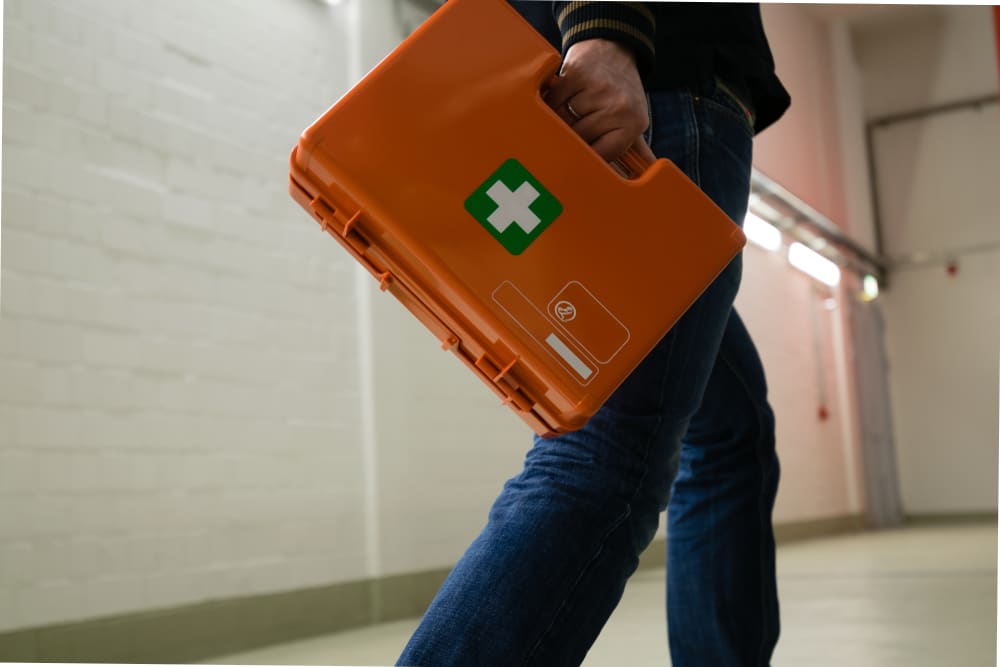
They may start to treat opioid withdrawal, but other unpleasant symptoms like agitation, anxiety, restlessness, and sweating start to show. Currently, there aren't any FDA-approved treatments specifically for tranq withdrawal, but there are protocols in development to help ease patients' symptoms.
In response to the influx of tranq overdoses, many government and health agencies are taking action. Local health departments are offering public education programs to help people understand the dangers of using tranq. They advocate for the safe and proper disposal of the drug and harm reduction efforts such as needle-exchange programs.
Medical examiners are also working to increase their understanding of tranq overdose to better recognize and respond to its signs and symptoms. Furthermore, The US House of Representatives is looking into ways to schedule the animal tranquilizer. However, this may hinder efforts to study the drug's effects and find a solution to help patients who are overdosing.
The number of drug overdose deaths in the United States has skyrocketed in recent years, with opioids leading the way as one of the most deadly and addictive substances. Many even consider it a drug overdose epidemic. According to the CDC, there were approximately 107,000 overdose deaths in 2021. In the same year, SAMSHA identified 141,529 unweighted drug-related ER visits from its analysis of 52 hospitals.
If these numbers are anything to go by, it's evident that addiction is a major problem in the US.
And yet, despite this alarming trend, many US hospitals and emergency departments lack dedicated addiction specialists who can help those suffering from substance or opioid use disorder. This is a glaring omission, especially given how critical an early intervention can be for someone in the throes of addiction.
Without access to addiction specialists on staff, people with substance abuse problems may not get the help they need at a crucial juncture. As a result, they may go through multiple hospitals or ER visits. A lucky few will be connected with a treatment facility while they're still at the hospital.

For everyone else, they walk out with a phone number to call, or often, nothing at all. Once they leave, many of these people go back to their old habits and never make the effort to call the number they've been given.
There's a clear need for hospitals to do better when it comes to addiction treatment. So why is it that so many don't have addiction specialists on staff?
If you go to a hospital with a kidney problem, you'll likely be seen by a nephrologist. If you have a heart condition, you'll be seen by a cardiologist. But if you're struggling with addiction, chances are you won't see an addiction specialist.
Only a few hospitals have someone who specializes in addiction medicine on staff. A majority of hospitals focus on primary care. Addiction is left untreated.
This is a problem because addiction is a disease requiring specialized care. Without access to an addiction specialist in ERs, people with substance use disorder are often left at the mercy of whoever happens to be on call. This could be a general practitioner, an ER doctor, or even a social worker, most of whom have very little training in physiology, medications, and other aspects of treatment.
For years, addiction prevention and treatment services have been delivered separately from other general and mental health care services. Drug and alcohol abuse has traditionally been viewed as a criminal or social problem. As such, prevention services were not typically considered a responsibility of health care systems. For this reason, those struggling with substance use disorders have had access to only a limited range of treatment options that were generally not covered by insurance.
In a nutshell, most hospitals don't have specialists because:
For a long time, addiction has not been seen as a medical problem but rather a social or psychological one. Some medical staff still see it as a moral issue and not something that requires formal medical treatment. This attitude can make it hard to justify dedicating staff and resources to addiction treatment.
Additionally, many hospitals are already understaffed and overstretched, so it could be difficult to add another specialist.
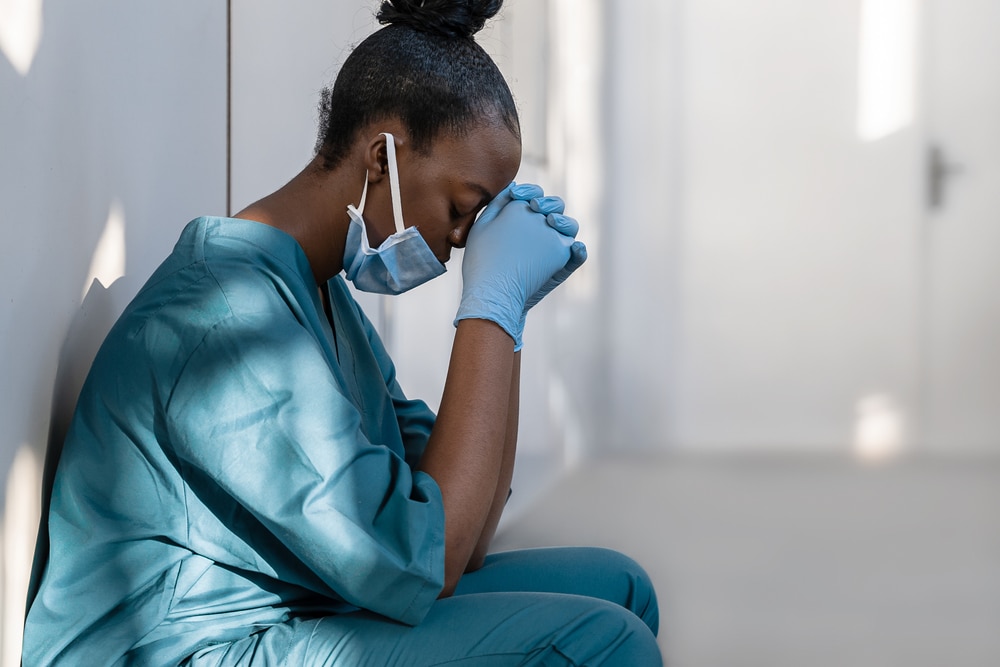
And finally, there's the question of reimbursement. Addiction treatment is notoriously underfunded, and many insurance companies don't cover the cost of specialized care. Hospitals can find it hard to recoup the cost of hiring an addiction specialist.
NPR shared a story of a 63-year-old heroin addict, Marie, who was admitted to Salem Hospital, north of Boston, for COPD. The next day, she was told she was ready for discharge after the doctor had confirmed that her oxygen levels were good. But the woman was experiencing heavy withdrawal symptoms and could not move. She didn't want to leave the hospital but felt like she had no choice.
Sadly, most hospitals would still let her go despite her pain and condition. Sometimes, she'll be issued a list of detox programs or rehab centers to call. But more likely, she'll be sent on her way with no real plan or hope for recovery.
This is a typical story of what's happening in many US hospitals. Marie was lucky to have found a doctor who administered her some medications that helped. But every day, people with addiction walk into ERs across the country only to be discharged without real help or support.
This is dangerous because it increases the likelihood of patients relapsing and overdosing. In fact, research shows that patients have a higher chance of overdosing within a few days or weeks of being discharged from the hospital.
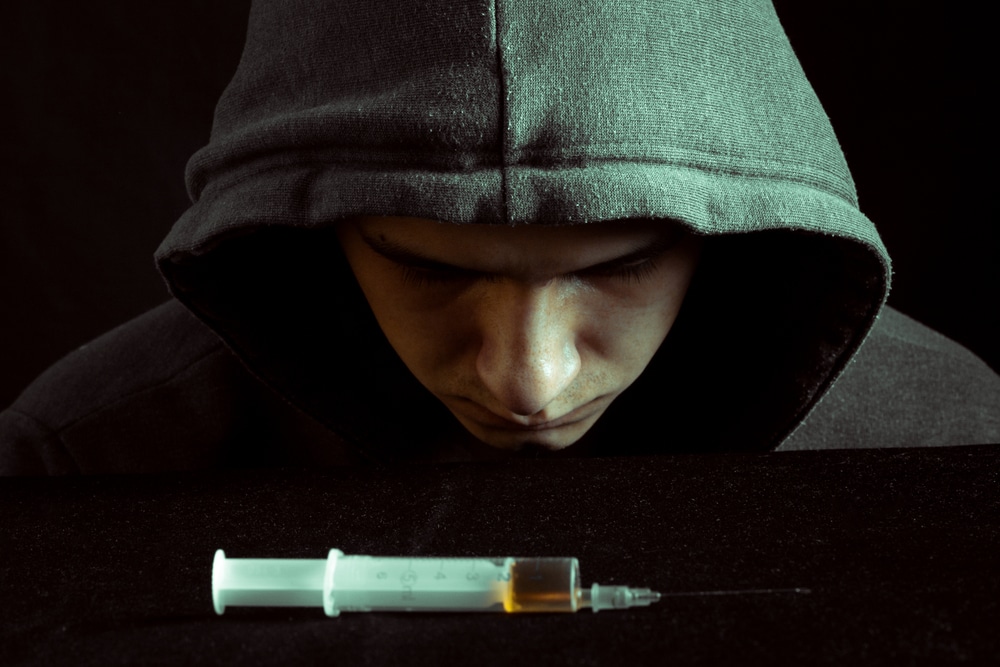
An addiction specialist is a medical professional specifically trained to diagnose and treat patients with substance use disorders. These specialists can provide critical support to patients who walk into the ER for various reasons but have an underlying addiction problem. Salem Hospital is one of the few hospitals that has succeeded in naming addiction as a specialty and hiring people with training in the disease.
And despite reservations from some staff, the addiction specialists get overwhelmed many days with referrals - a clear sign of the need for their services. The trend is similar in five other Massachusetts hospitals that added addiction specialists in the last three years. These facilities are funded by HEALing Communities study. Addiction specialists can help patients in several ways, including:
Addiction specialists are vital in helping patients get the treatment they need. They can also refer them to a reputable treatment facility for specialized care. Hospitals can provide a much-needed service to their communities by having these professionals on staff.
According to the National Institutes of Health, effective integration of addiction prevention, treatment, and recovery solution across healthcare systems can help address drug abuse and related issues. This is also the most promising way to improve access to and quality of treatment.
Cigarette smoking has been linked to cancer, diabetes, lung disease, COPD, tuberculosis, and other health complications. It's also responsible for over 480,000 deaths annually in the United States. Given the dangers, many people have opted to vape or use e-cigs like JUUL to ease the transition from traditional cigarettes to not smoking at all. But is vaping a safer alternative to smoking?
Several studies have shown that while vaping is less harmful than smoking, it's still not safe. Vaping can damage your lungs and airways and has been linked to cancer. The Food and Drug Administration (FDA) has also found that some vaping products contain harmful chemicals, including metals that can be toxic.
To reduce the number of people affected by these health risks, the FDA is reviewing e-cig products to ensure they are "appropriate for the protection of public health." The manufacturers of vaping products must prove their products are an aid to traditional adult smokers and not appealing to youth and teens. This explains why the FDA has proposed a ban on all JUUL products.
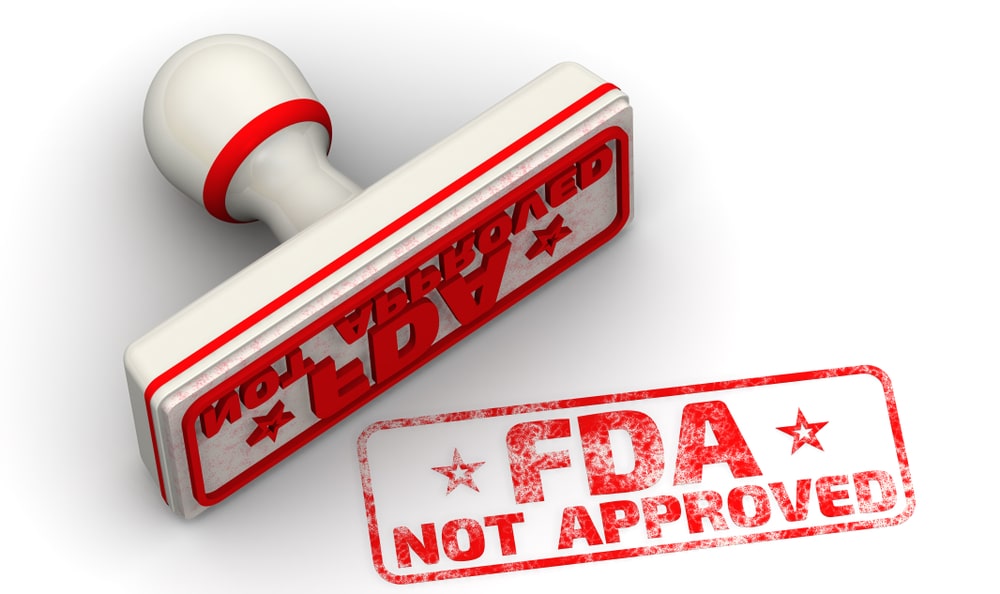
On July 5, 2022, it issued marketing denial orders (MDOs) to JUUL Labs Inc. for all its products currently marketed in the US. This MDO prevents the company from continuing to sell its products in the American market. JUUL should also remove all of its products from the market or face enforcement action.
The reason is that after reviewing JUUL's premarket tobacco product applications, the FDA established that the application did not have enough evidence to support a finding that the products are "appropriate for the protection of public health." As the FDA puts it, there are scientific issues unique to the JUUL application that warrants additional review.
According to the FDA's news release, the insufficient and conflicting data in some of JUUL's study findings raised concerns that haven't been properly addressed and prevented the FDA from executing a complete toxicological risk assessment of the said products on the JUUL application.
The FDA has yet to receive evidence to suggest that JUULpods or devices are hazardous. However, the underlying factor is that there isn't adequate evidence to support a finding that the products are appropriate for the protection of public health. Besides, there's no way to determine the potential dangers of using JUUL pods with a non-JUUL device or third-party e-liquid pods with a JUUL device.
The FDA is encouraging JUUL users to report any adverse effects they may have experienced after using the product through the Safety Reporting Portal and seek medical help.
JUUL is a type of electronic cigarette (e-cigarette) that is battery-operated and looks like a USB drive. It was first introduced in 2015 by two Stanford graduates, James Monsees and Adam Bowen, who are also the co-founders of JUUL Labs. The company is based in San Francisco, California.
The vaping device works by heating a nicotine liquid, which creates an aerosol vapor. JUUL says its e-cigarette is a "satisfying alternative" for adult smokers who want to switch from traditional cigarettes. The company also claims its products are not meant for youth or non-smokers, as nicotine can be addictive and harmful. However, their products come in different flavors - like mint, mango, and crème Brulee, which appeals to the younger audience.

A JUUL pod contains 0.7mL of nicotine liquid, equivalent to a pack of cigarettes or 200 puffs. The JUUL device delivers a high dose of nicotine, which is why it has been criticized for being especially addictive.
Vaping is dangerous because it increases your risk of lung cancer, lung infection, and other health problems. It is especially dangerous for young people. The nicotine in e-cigs (e-cigarettes) is highly addictive, and can harm the developing brain. Youth vaping is considered dangerous for several reasons, including:
Vaping exposes users to a range of harmful chemicals, including nicotine, metals, and other toxins which are harmful to health. A study published in the Journal of the American Medical Association found that e-cigarette users had significantly higher markers for heart damage and inflammation levels than non-users.
They also had higher levels of lung inflammation. This suggests that vaping may be harmful to your cardiovascular and respiratory health. It may also increase your risk of developing chronic (long-term) diseases such as heart disease, lung disease, and cancer.
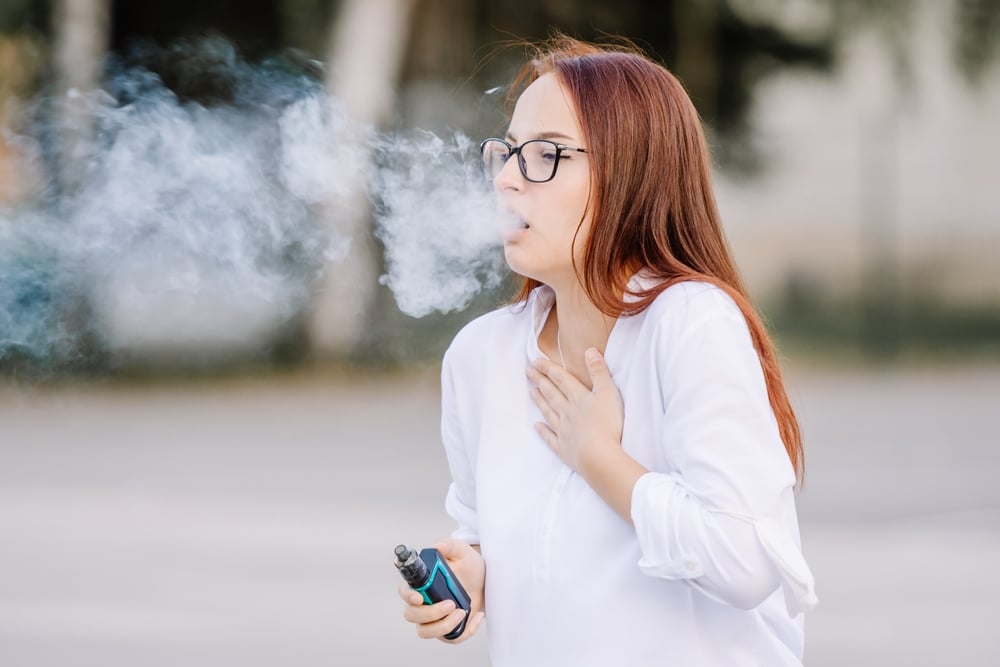
Vaping can be addictive, especially for teens still developing their brains. The nicotine in e-cigarettes can be particularly addicting, and this can lead to health problems down the road.
Research has shown that teens who vape are more likely to start smoking cigarettes in the future. This is likely due to the fact that vaping can act as a gateway to smoking, as it normalizes the behavior and makes it seem less risky.
Electronic cigarettes, or ecigs aren't the best smoking cessation tool. In fact, they may even make it harder to quit smoking in the long run. A recent study found that most people who used e-cigs to quit smoking ended up using both e-cigs and traditional smoking. So if you're trying to kick the habit, it's best to steer clear of e-cigarettes altogether.
E-cigarettes are becoming increasingly popular among young people, who are attracted by the flavors and the perceived lack of health risks. But this means that more young people are taking up smoking and becoming addicted to nicotine. This is a major concern, given the long-term health risks associated with smoking.
Vaping may be harmful to your health, and it's certainly not the best way to quit smoking. And with more young people taking up vaping, we could be facing a public health crisis down the line. If you're struggling with an addiction to nicotine, it's important to get help from a doctor or treatment center. There are many resources available to help you quit, and you don't have to go through it alone.
Drug abuse and addiction can affect almost every part of your body, including your veins. The chemicals in these drugs can cause the walls of your veins to break down, making them more susceptible to rupture.
In addition, the debris from these breakdowns can block blood flow and cause inflammation. As a result, your veins can become very painful and may even require surgery to repair. In some cases, you may need compression stockings to manage the side effects.
Drugs can have a big impact on your circulatory system. This includes your heart, arteries, veins, and blood. Drugs can affect your heart health in several ways, including:
These effects can strain your heart and lead to different types of heart disease. Drugs can also damage the lining of your arteries, making them more likely to become blocked. This can lead to a heart attack or stroke. In addition, drugs can thin your blood, making it more difficult for your circulatory system to do its job.
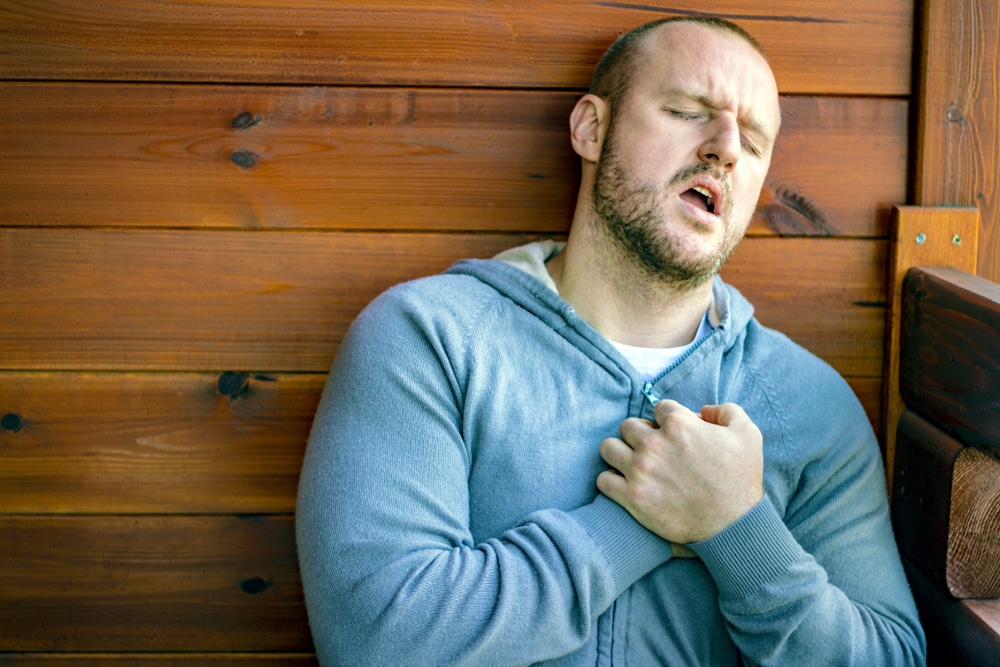
When you think of cocaine, you might picture the white powder snorted through a rolled-up bill. But what you might not realize is that this illegal drug is extremely dangerous and can cause severe damage to your veins and circulatory system. Here's how:
Cocaine use increases the risk of deep vein thrombosis (DVT) by damaging the veins and causing them to constrict. This can lead to a build-up of blood in the veins, which increases the likelihood of a clot forming.
In addition, cocaine use leads to an increase in heart rate and blood pressure, further damaging the vessels and leading to DVT.
DVT is a type of heart disease that can occur when a blood clot forms in a deep vein, usually in the leg. If the clot breaks loose, it can travel to the lungs and cause a pulmonary embolism, which can be fatal. DVT can also cause post-thrombotic syndrome.
Cocaine can also cause dehydration and damage organs such as the liver and lungs. In fact, chronic cocaine use has been linked to an increased risk of heart attack and stroke.
MDMA is a popular party drug, especially among young people. Also known as ecstasy, the drug produces feelings of euphoria and increased energy. However, MDMA can also have serious consequences for your circulatory system. The active ingredient in ecstasy, 3,4-methylenedioxymethamphetamine (MDMA), interferes with the body's ability to regulate blood flow.
As a result, blood vessels constrict, and blood pressure rises. MDMA also speeds up heart rate and can cause irregular heart rhythm. In some cases, these effects can lead to overheating, dehydration, and even death.

Heroin is a powerful opioid drug that can have devastating effects on the circulatory system. When heroin enters the bloodstream, it binds to receptors in the brain that are responsible for pain relief, heart rate, and respiration. This binding process slows down the body's natural processes. This happens more faster when the drug is injected via needle or syringe. They can also cause dangerous side effects including slowed heart rate and breathing, constricted blood vessels, and increased blood pressure.
In some cases, these side effects can lead to collapsed veins, tissue damage, and even death. Heroin users are also at risk of developing serious infections, such as endocarditis (an infection of the heart's inner lining).
Methamphetamine is a powerful and dangerous stimulant that can adversely affect the cardiovascular system. In particular, its use can lead to elevated blood pressure, acute vasospasm, and atherosclerotic cardiovascular disease. These conditions can cause serious and potentially fatal damage to the arteries and blood vessels.
Meth can also damage the lining of blood vessels, making them more susceptible to rupture. In extreme cases, this can lead to stroke or even death. In addition to its effects on the circulatory system, methamphetamine also increases the risk of cancer, psychosis, and memory loss.
When you think of the dangers of prescription drugs, you might not consider the risks to your veins and circulatory system. However, certain medications can hurt these vital systems.
For example, prescription drugs like antipsychotics and antidepressants can have serious side effects. One of the most potentially dangerous is venous thromboembolism, which occurs when a blood clot forms in the veins. This can lead to heart conditions, stroke, and even death.
In addition, these drugs can also damage the circulatory system. Antipsychotics can cause high blood pressure, while antidepressants can cause irregular heartbeat.
Some prescribed blood thinners can also cause small cuts and tears in the veins, leading to inflammation and pain.
Tobacco use affects the entire cardiovascular system, including the heart, blood, and vessels. The side effects of smoking can be severe.
Over time, they can increase the risk of heart disease, heart failure, or stroke. This is thanks to the chemicals in tobacco that damage the veins and destroy the elasticity of the arteries. This is a common cause of heart problems.
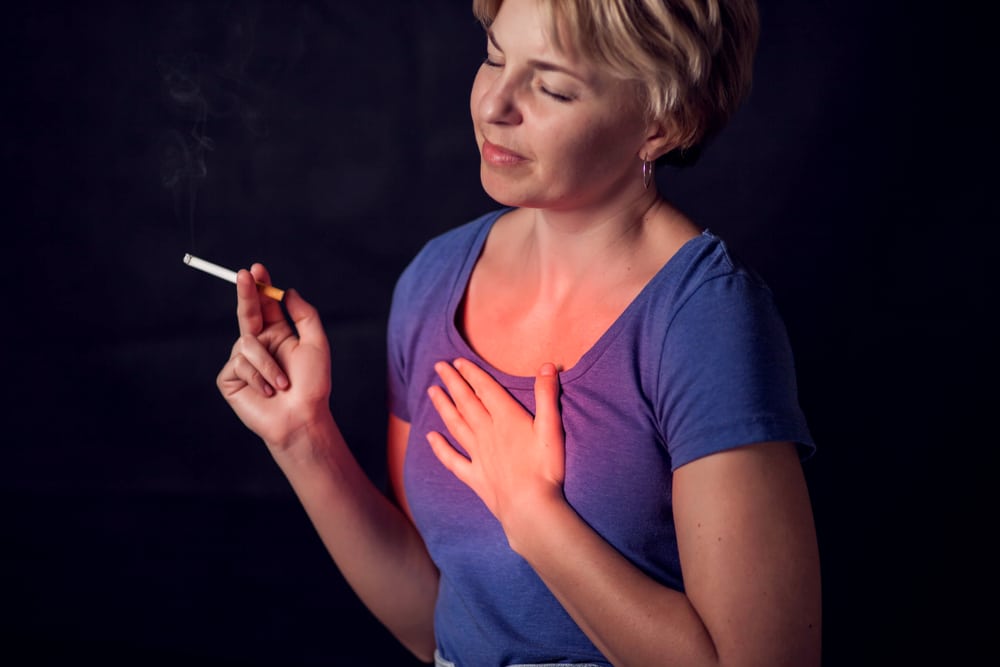
Smoking has other side effects, including shortness of breath, heart arrhythmias, and increased risk for congenital heart defects. Nicotine, a chemical present in smoke, is also known to cause high blood pressure and increased heart rate.
There are many ways to protect your circulatory system from drug abuse and damage.
1. One way is to avoid using drugs that can damage the circulatory system. These include tobacco, alcohol, and illegal drugs.
2. Another way to protect your circulatory system is to eat a healthy diet. Eating foods high in fiber can help reduce the risk of cardiovascular disease.
3. Exercise is also important for maintaining a healthy circulatory system. Regular physical activity helps keep your heart and blood vessels healthy and helps lower blood pressure.
4. Finally, it is important to manage stress healthily. Stress can contribute to cardiovascular disease, so it is important to find a healthy way to cope with stress.
If you or someone you know is struggling with drug addiction, it's important to seek help as soon as possible. With treatment, you can prevent the damaging effects of drugs on your body. StrugglingWithAddiction.com can match you up with the right rehab that will help you regain control of your life.
Drug addiction doesn’t only affect the drug user. Drug use also affects entire families, probably more than most people acknowledge.
In the United States alone, approximately 21 million people above 12 years suffer from substance use disorders, including alcohol and drug abuse. Most young people start abusing drugs in high school or earlier. To prevent drug abuse among young people, the Substance Abuse and Mental Health Services Administration is tasked with developing programs, services, and policies on drug abuse and misuse.
Drug addiction takes a toll on an individual’s psychological, emotional, and physiological well being. This is one way alcohol and drug abuse has a negative impact on families.
This article will discuss the various effects of drug use on families.
When a loved one is struggling with addiction, family members have to find ways to cope with it. More often than not, family members have conflicting and intense emotions regarding the situation at hand. As a result, family relationships become strained.
Addicts’ families are made to understand that their loved ones don’t intentionally want to hurt them. Therefore, they try to empathize by supporting, encouraging, and loving them regardless of the situation.
Unfortunately, the emotional abuse, deceit, and manipulation that addicts subject them to can be overwhelming. Consequently, there is a high probability that family relationships will suffer.
Here are some of the ways drug use affects the family
The National Center on Substance Abuse and Child Welfare reported that in the United States, approximately 8.7 million children live in households where at least one parent has a substance use disorder. Most of these children experience abuse or parental neglect.

Children whose parents use drugs or that have an alcoholic parent suffer both physically and emotionally. Most times, the parents neglect the children. Parents who abuse drugs tend to stop focusing on their role as parents; thus, they become emotionally and physically unavailable for their children. Sometimes, the parents stop taking care of their children’s basic needs. They don’t provide meals or a clean environment, and neither do they go out of their way to be involved in their children’s health care, social life and education.
Growing up in an environment where neglect is the norm affects children’s mental health. Additionally, it affects their ability to have healthy relationships with other people.
Children in such family settings are also more likely to experience emotional, physical, and sexual abuse. The abuse may be from their parents or other people, including relatives and family friends.
Parents’ drug addiction can have long-term psychological effects on children. There is a high probability that the children of alcoholics and drug users will have behavioral problems like anxiety, detachment, angry outbursts, and depression. They can also develop mental health problems as they get older.
Research has also shown that children who suffer from neglect and abuse are more likely to abuse drugs in the future.
Drug addiction tends to take a toll on family finances. Drug users often lose their jobs since they can no longer perform or show up as expected. Consequently, they start using family savings to finance their drug addiction.

Since illegal drugs are expensive, the family may run into financial problems quickly. Paying for basic needs like food, utilities, clothing, and rent may become a problem. There is also a need to pay for addiction treatment which can be expensive.
Other than that, drug users may get into trouble with the law. When this happens, it is up to the family to raise money to ensure their loved one doesn’t end up in jail.
Drug users may also feel entitled to family members’ money. Since they cannot finance their lifestyle, they rely on money from other family members, or eventually they could become homeless.
When a loved one is an addict, most, if not all, of their responsibilities become their partner’s responsibilities.
The partner has to juggle between paying bills, raising the children, cleaning up after the addict, and making important decisions regarding the family, among others. Consequently, they may become stressed. Stress is a risk factor for other conditions like depression and high blood pressure.
Most addicts make promises they can’t keep. They also don’t live up to their agreements with family members, further straining their family relationships.
Family members become frustrated when the addict doesn’t live up to their promises and obligations.
Children are also affected by this. When an addict promises his children something and does not follow through, the children have trust issues. They will find it hard to trust other people since their parents have already set a bad precedent.
Drug use can lead to emotional and physical abuse. Since drug users are irrational and most family members are on edge due to their behavior, simple disagreements can lead to big fights, sometimes physical.
Substance abuse and mental health issues go hand in hand. Drug users tend to be emotionally abusive and manipulative. Their behavior negatively affects family members and other people they are close to.
Sometimes, children whose parents are drug addicts become abusers. In an attempt to mask their struggles, they misbehave and act out, hurting other people in the process. Eventually, some become drug users too.

Most drug addicts are unpredictable. As discussed above, drug abuse and mental health issues go hand in hand.
It is almost impossible to predict how a drug user will react to situations. Consequently, most family members resort to being extra careful with their words and actions to avoid confrontation.
Children that grow up in settings where one or both parents are addicts tend to be highly reserved. They are conditioned not to say or do anything that would rub their parents the wrong way from a young age. This tends to reflect in their day-to-day lives.
Generally, drug use breeds fear in the family.
When you realize your loved one is struggling with an addiction, you should encourage them to seek professional help. Try to make the addict see how their drug use affects them and other family members. Remember to be compassionate while doing this.
If they don’t seem to care, you can stage an intervention with the help of other family members. You can also involve an intervention specialist to increase its chances of success.
The entire family should also consider getting therapy or counselling. Therapy goes a long way in helping everyone deal with the effects of a loved one’s addiction.
If the family member agrees to seek treatment and join support groups, the healing process will be much easier. The chances of successfully rebuilding strained family relationships are also much better.
People who abuse drugs use a range of items to make, abuse, or conceal drugs. Most of these items are either hard to access or pretty expensive to buy. So users may opt for everyday household essentials. For example, they will use plastic storage containers to store the drugs or create a pipe out of a pen.
For a loved one, knowing how to recognize these items can help you act quickly. When it comes to drug use, the sooner someone can get substance abuse treatment, the faster they can recover. Becoming drug free is one of the main goal of our health care system.
This is particularly true for highly addictive substances such as heroin and cocaine. Others like fentanyl are very potent and could lead to overdose deaths, according to the National Institute on Drug Abuse.
But recognizing drug items can be harder than it sounds. Generally, these items refer to any material or equipment that drug users use to make, administer, or transport drugs. The items are not always obvious as the methods of drug use or concealing drugs have become quite clever.
A 2018 survey by the National Survey on Drug Use and Health revealed that about 20.3 million people in the United States aged 12+ had a substance use disorder related to alcohol or drugs in the past year. So, if you suspect that your loved one is abusing drugs, it’s best to get to the bottom of it before the situation worsens.
This article will highlight the common household items that people use to abuse, transport, or conceal drugs to give you an idea of what to watch out for. We’ll also recommend steps that you can take once you confirm that a loved one is indeed abusing illegal drugs.
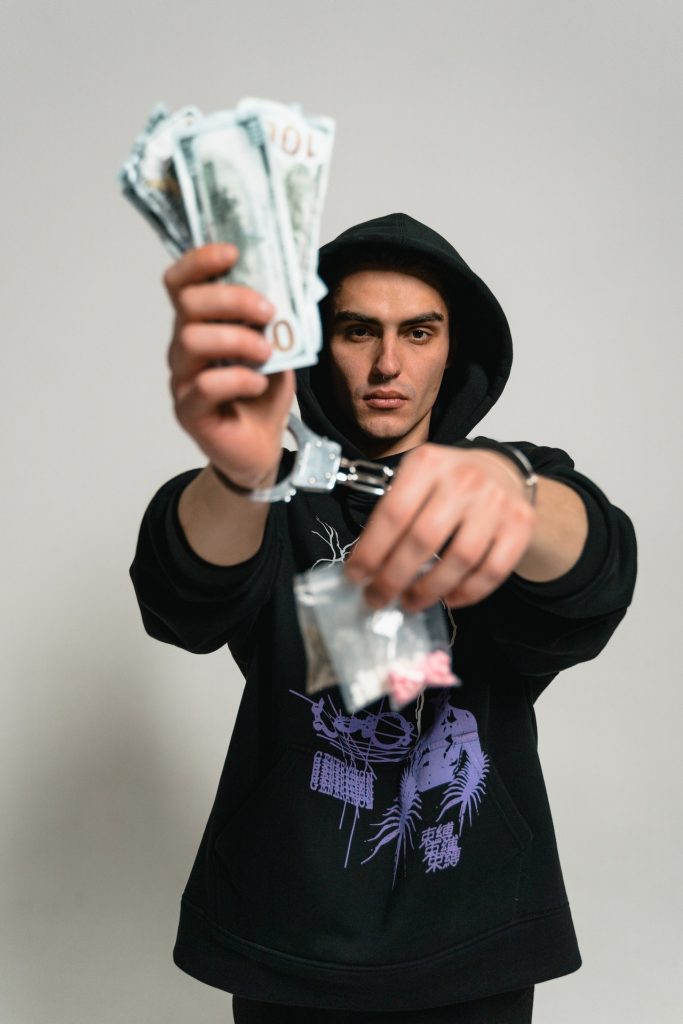
Toothpicks are perhaps the last household items that you'd expect to find on this list. However, they are common paraphernalia, especially among people who smoke illegal drugs like opioids, marijuana, cocaine, and meth. These drugs are smoked in a glass pipe or bong, and from time to time, the bong gets clogged up and stops functioning as it should.
When it does, drug users will need a series of supplies to clean it up, including toothpicks (or paper clips). People also use toothpicks for drugs like meth - where they soak the toothpicks in liquid meth and chew on them throughout the day.
Cocaine users tend to have coke nails. Coke nails refer to the long fingernails; usually, the pinkie nails used to scoop and snort powder cocaine. This act is referred to as doing a bump. The nail acts as the vessel instead of needing an item, like a dollar bill, ATM card, or straw, to snort coke.
But sometimes, one may choose to use finger nail clippers in the place of their nails. Clippers facilitate a quick and easy snorting of a small amount of coke by dipping it into the small containers used to hold drugs.
Teens and young adults who are not old enough to buy alcoholic beverages go for alternatives like nail polish remover that contain alcohol. And since there are no age restrictions surrounding nail polish removers, they buy and drink it for the intoxicating effects.
Some intentionally inhale its vapors (huffing) or apply it directly to their skin for the effects. Young adults use nail polish remover because it’s a cheap and common household item. No one will suspect anything if they see a nail polish remover in their bags or belongings.
Spoons are often used as cocaine or heroin paraphernalia. But drug spoons aren’t the same size as the regular spoon - they are often smaller and might be discolored depending on how the person uses them.

This may come as a surprise, but some people snort, huff, or sniff washing powder as an alternative to crystal meth. Laundry detergents have alcohol and ethanol as ingredients. But they are also packed with chemicals that can harm the body, making them very dangerous.
In addition to using detergents as drugs, some steal the detergents and trade them for drugs. According to one post in the New York Magazine, a 150-ounce bottle of Tide detergent is $5 or $10 worth of crack cocaine or weed. Other similar products abused by teens include deodorants, bath salts, cleaning products, and aerosol sprays.
Foil and toilet paper are often used to smoke heroin. Teens and young adults who abuse drugs may have toilet paper or paper towels sitting around in their rooms. Usually, these serve as some sort of huffing device. You may also notice air canisters, Freon, glue, and other household items.
Teens and young adults use household essentials like compact mirrors, razor blades, straws, tin foil, and hollowed-out writing instruments for drug preparation and use. They also use masks to store or hide drugs.
Finding your loved one with one of these items shouldn’t sound an alarm. After all, they are household items. However, it’s important to pay attention to warning signs that might indicate drug use, such as:
● Changes in behavior and mood
● Paraphernalia in their bags
● Withdrawal symptoms when not using
● Poor hygiene
● Sudden shift in weight
● Missed appointments and other responsibilities
● Changes in sleep patterns
● New friends or acquaintances
● Obvious intoxication
● Hacking cough
● Bloody or runny noses
● Dental decay or scabs on the body
● Talkativeness
● Needle or track marks

You might also want to watch out for risk factors like mental health problems. Stress, anxiety, depression, etc., often tend to co-occur with substance abuse. The risks of drug use are higher in people with mental disorders.
Drug use can have a range of direct and indirect effects on the body. Usually, the effects depend on the type of drug, the person’s health, how much is taken, and how they’re taken. According to NIDA, short-term effects include changes in blood pressure, wakefulness, heart rate, appetite, mood, and stroke, heart attack, overdose, stroke, or death. Long-term effects include cancer, lung disease, heart disease, mental illness, hepatitis, HIV/AIDs, and addiction.
If you suspect your loved one is abusing drugs, it’s best to approach the topic with a well-meaning plan. The aim is not to make the person feel attacked. Find constructive ways to talk to your loved ones, and consider getting them into a treatment program. The best facilities offer individual and family programs to help families and their loved ones.
Individuals often repurpose everyday household items for drug-related activities as makeshift drug paraphernalia, mainly due to their accessibility and the need to conceal drug use.Common household items such as aluminum foil, plastic bottles, and cans are often transformed into makeshift smoking devices or improvised snorting tools for various substances like heroin, crack cocaine, or powdered drugs. These items are adapted to serve the purpose of inhaling or ingesting drugs discreetly, allowing individuals to engage in drug-related activities without drawing attention to their behavior.
Moreover, items like light bulbs or plastic bags may be repurposed into makeshift vaporizers or drug storage containers, providing individuals with a means to consume or transport drugs in a discreet manner. While repurposing household items for drug use may seem convenient, it poses serious health risks, including exposure to harmful chemicals, burns, infections, and overdose. Therefore, it's crucial to address substance use concerns through proper treatment and support rather than resorting to makeshift methods that endanger one's health and well-being.
Several signs may indicate that household items are being repurposed for drug use. One common indicator is the presence of burnt or melted materials on items like aluminum foil, plastic bottles, or cans, suggesting they have been used as makeshift smoking devices for drugs such as heroin, crack cocaine, or methamphetamine. Additionally, finding unusual or modified objects like light bulbs, plastic bags, or pens may raise suspicion, as they may be altered for drug-related activities like vaporizing drugs or inhaling powdered substances.
Moreover, the discovery of residue or powdery substances on household surfaces like mirrors or countertops may suggest that items are being used for snorting drugs like cocaine or crushed prescription pills. Hidden or secretive behavior, such as concealing household items in unusual places or sudden changes in social behavior like withdrawal and isolation, may also indicate underlying drug use. Additionally, unexplained financial difficulties or missing household items commonly used in the drug preparation process may further raise concerns.Recognizing these signs is crucial for identifying potential substance abuse issues and providing support and assistance to individuals who may be struggling with addiction.
To prevent household items from being co-opted in drug use, several proactive steps can betaken. Education and awareness initiatives are essential, as they equip individuals with the knowledge to recognize signs of drug use and take preventive action. Proper disposal of unused medications is crucial to prevent them from being accessed and misused for recreational purposes. Additionally, securing household items commonly associated with drug use, such as lighters or aluminum foil, in inaccessible locations can deter easy access. Open communication within families and communities fosters a supportive environment where individuals struggling with addiction feel comfortable seeking help and support. Regular monitoring and supervision, particularly of adolescents and young adults, aids in identifying early signs of substance abuse and intervening effectively. Seeking professional help from addiction specialists or treatment centers is paramount if substance abuse issues are suspected or identified, as it provides individuals with the necessary support and resources to address their addiction and prevent relapse. Lastly, safe disposal of drug paraphernalia minimizes the risk of accidental exposure or injury and prevents their reuse. Through these preventive measures, households can create safer environments and mitigate the risk of household items being used for drug-related activities.
Yes, household items can be ingeniously repurposed to conceal drug use. Individuals may utilize everyday objects to hide drugs, drug paraphernalia, or the physical signs of drug use from others. Common methods include hollowing out books or containers to stash drugs discreetly, creating false-bottomed compartments in containers to evade detection during searches, or modifying personal belongings like pens or clothing to conceal small amounts of drugs or paraphernalia. Larger household appliances and furniture may also be utilized, with hidden compartments or unused spaces serving as concealment spots. While these methods allow individuals to engage in drug-related activities discreetly, it's crucial to acknowledge the associated risks and potential consequences. Concealing drug use not only perpetuates substance abuse but also hinders individuals from seeking the help and support they need for recovery. Addressing substance abuse issues through proper treatment and support is paramount to promoting long-term health and well-being, both for individuals and their communities.
People abuse drugs for various reasons. Some do so to fit in, to seem more mature, or to experiment. Others use drugs to escape, to relieve boredom, or rebel. They see drugs as a solution or a way to cope with a situation. But since most of these drugs are highly addictive, they often end up being the problem. According to the National Institute on Drug Abuse, illicit drug use can lead to dependence, addiction, and in worst cases, the drugs can kill you.
You’ve probably heard that drugs are dangerous one too many times; it’s getting hard to believe. But all drugs, including prescription pain relievers, have real potential for harm. Prescription drugs can kill you - irrespective of whether you use them alone, or you mix them with other drugs. Vital statistics show that the death toll from abuse and misuse of such drugs is steadily rising. And if you don’t stop using, you could be part of these statistics soon.
Most drug fatalities result from a combination of factors, not just the drug itself. For example:
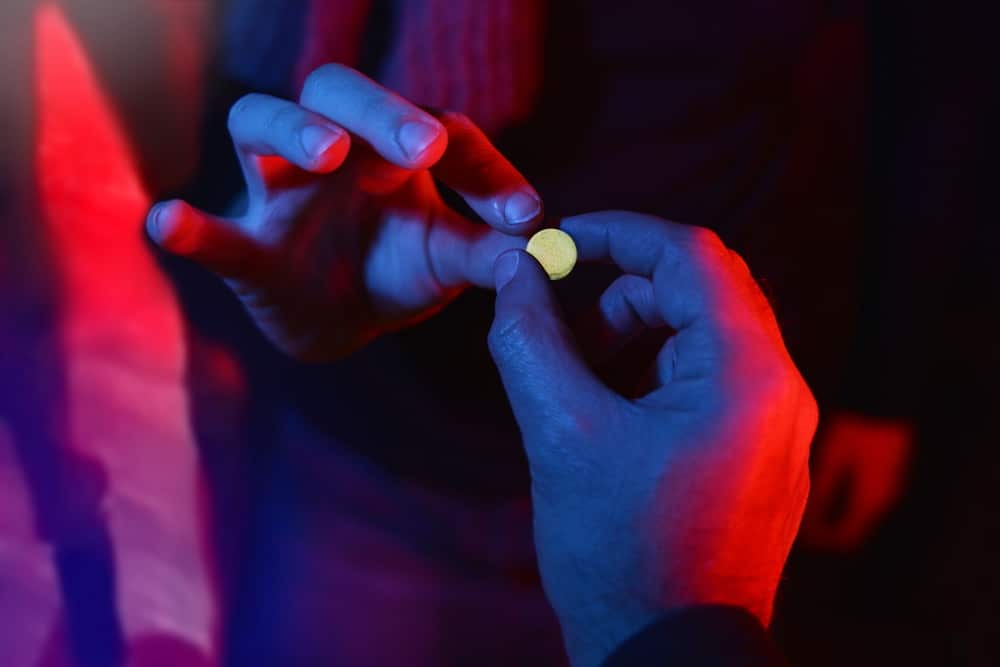
Stimulants like cocaine flood the brain with norepinephrine and dopamine, creating euphoric effects while boosting focus and confidence. They also stimulate the cardiovascular system – and that’s where the danger comes in. Cocaine causes rapid or irregular heart rate, blood vessel constriction, and increased blood pressure.
The constriction of blood vessels means less oxygen supply to the heart muscle and can cause a heart attack. Cocaine users are 23 times more likely to have a heart attack than those who don’t use. No wonder cocaine is referred to as the perfect heart attack drug.
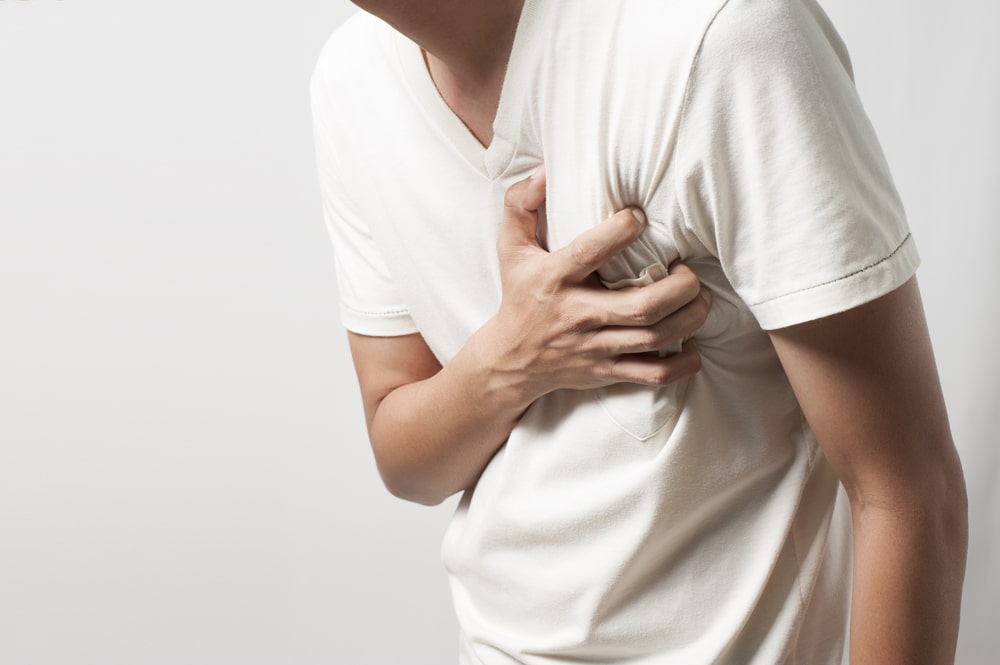
When opioids and other depressants, get to the brain, they bind to mu-opioid receptors and activate them. This produces euphoric effects but also triggers a series of physical and psychological actions. Opioids produce respiratory-depressing effects. As a result, fatal overdose victims often die from respiratory depression (choking to death) because they cannot get enough oxygen to feed the demand of their body’s organs.
A drug overdose happens when a person takes too much of a substance or a mix of substances. This is so even if it was an accidental overdose. People can overdose on alcohol, prescription drugs, illicit drugs, and other substances. In many cases, overdoses are fatal.
But those who get immediate medical attention can be saved. As mentioned earlier, drugs can overwhelm the body in different ways. But the most common cause of death during an overdose is respiratory failure.
The signs of an overdose depends on the type of drug involved. Overdose deaths involve sleepiness, confusion, and coma. Other factors can include:
Accidental overdose is the leading cause of death in the US for people under 50 years. Drug overdose deaths now surpass deaths from homicides, car accidents, firearms, or HIV/AIDS. In 2017 alone, more Americans died due to drug overdose than they did in the entire Vietnam War. Of these deaths, nearly 66% involved illicit drugs or prescription opioids.
In 2019, more than 70,000 Americans died from a drug overdose. And the drug overdose trend doesn’t seem to be slowing down. According to recent provisional data from the CDC, the number of overdose deaths shot to 68,630 deaths in 2020. This increase is attributable to the pandemic and its negative impacts on lives, especially of those struggling with substance use disorders.
The addiction epidemic was already a significant problem across the US. But the pandemic has only made the problem worse. Its spread has sent people into panic. And with long term travel restrictions, social isolation, economic shock, disrupted access to addiction support, and increased mental health distress, people turn to drug use and misuse trying to cope.

In 2018, there were 14,666 overdose deaths involving cocaine in the US, according to a CDC report. This represents about a 2.5% rate increase in cocaine-involved deaths in 2018 than in 2014. The report says that the overdose death rates attributed to cocaine that has been cut with synthetic opioids, like fentanyl increased faster in recent years than did deaths from pure cocaine. Among 70,237 drug overdose deaths in 2017, about 23,139 or 32% involved cocaine, psychostimulants, or both.
50,000 of the 2019 drug deaths were from an opioid overdose. The abuse of and addiction to opioids, including heroin, prescription drugs, and fentanyl, is a severe crisis that affects public health and economic and social welfare. CDC estimates the annual economic burden of prescription opioid abuse alone in the US to be $78.5b. This includes the cost of addiction treatment, health care, lost productivity, and criminal justice involvement.
States across the US are reporting a sharp increase in fentanyl-involved overdose deaths. Fentanyl overdoses can happen within seconds to minutes of use. The sad part is many users don’t seem to be looking for fentanyl and have no idea that the drug they’re using contains fentanyl.
Meth, cocaine, and powder heroin may be cut with fentanyl. There have also been cases of illicit Oxycodone and Xanax tablets containing fentanyl.
Meth-related deaths are also rising across the US, according to NIDA. Overall data shows overdose rates rose from less than 0.8 to 4.5 per 100,000 women and 2 to 10 per 100,000 men, a more than fivefold rise from 2011 to 2018.
Call 911 if you suspect a drug overdose. Emergency help can save a life. General treatment strategies involve:

Overdose deaths remain a critical problem across our nation. If you have prescription medicines, ensure that you use them according to the doctor’s recommendations. Overdose occurring from prescription drugs often happens when they are used in ways not advised by your doctor.
Quitting drug use is also a great way to prevent overdose. If you are having a hard time quitting, you should seek professional help. Addiction treatment centers in Texas and across the US have therapists and physicians who can help address mental and physical health issues.
A person who misuses prescription medicine will do anything to get doctors to prescribe more drugs. They will lie about the severity of their symptoms, forge prescriptions, beg or even shop doctors to try to access the medications. These are a few types of drug-seeking behaviors.
The sad news is that most drug seekers won’t admit to the drug problem. Some will justify their actions by claiming that prescription drugs help them manage their chronic pain or mental health issues. Their denial makes it hard to get them into addiction treatment. Unfortunately, this drives them deeper into using, opening them up to potential substance abuse and ensuing substance abuse disorders.
Prescription drug abuse involves the use of pain medication for their pleasurable side effects instead of prescribed pain relief reasons. As defined by the National Survey on Drug Use and Health (NSDUH), prescription drug misuse is any use contrary to the doctor’s direction, and includes:

According to the 2015 NSDUH report, about 91.8 million adults in the United States, 18 years and older, used pain relievers in the past year. Of this number, 11.5 million misused pain medication at least once over the same time. Another report on the National Institute on Drug Addiction website shows that 18 million people had misused prescription drugs at least once a year leading up to 2017. Many cited physical pain as the reason behind the abuse. NSDUH’s research on prescription drugs was specific to controlled substances.
Controlled substances are drugs that have been declared illegal for use or sale in the open market but can be dispensed under a doctor’s prescription. This aims to reduce the risk of drug abuse, addiction, mental and physical harm, or death. It also protects the public from potential dangers arising from the actions of those under the influence of these drugs.
A drug seeker is anyone who manipulates a healthcare provider to try to obtain medications. They are primarily patients who abuse alcohol and drugs or are in chronic pain. But drug seekers can also be people who want to barter or sell most or all of the prescription drugs they get.
It is not easy to tell a legitimate patient apart from a drug-seeker. The latter could be someone unfamiliar to you. They may claim to be from another town and have forgotten or lost a prescription of drugs. They could also be someone familiar to you, like a co-worker, another practitioner, relative, or friend. Drug seekers often have the same traits and behaviors. Knowing these behaviors and tricks is the first step to detecting those trying to manipulate you into obtaining desired drugs.

Someone with drug-seeking behavior may walk into a medical office and request specific drugs by name. They may tell you about the drug, dose, and quantity they want. In many cases, this patient may not want to listen to anything you says. Additionally, they may aggressively complain about a need for the drug. They will ask for brand names, request dose increases, and even claim to have multiple allergies to alternative medicines. Efforts to diagnose their issues may result in irritation or anger on their part. Typical requests and complaints are obvious drug-seeking behaviors that can give the drug seeker away.
This is a pretty obvious drug-seeking behavior that some patients use. Drug seekers know that they cannot access controlled substances without a doctor’s prescription. So, they go ahead and forge one to get the drugs. In case a patient does this, it’s essential to notify law enforcement because forging prescriptions is illegal in the United States.
Since drug-seeking patients are only interested in obtaining prescription drugs, they hardly keep follow-up appointments. Once they get their drugs of choice, they will disappear into thin air until they need more, then they resurface.
Another common trait of people with drug-seeking behavior is self-medicating. These patients will go ahead and use pain drugs for other reasons. They may use it for stress, anxiety, or even sleep. Regular self-medication can lead to addiction and the worsening of these mental health disorders. The problem may only worsen as they may use more drugs to address withdrawal symptoms or the dependence issue.
Once a drug-seeking patient with a substance use disorder gets their prescription for pain drugs, they will be excessive in their flattery. Some might shower you with praises, suggesting you are the best in the field. They will even hug you to show their appreciation. However, this will only go on as long as they get what they want. When you calmly and clearly state the effective treatment plan and explain that their condition doesn’t warrant the prescription of opioids, the entreating suddenly ceases. Usually, these patients can sense when the doctor is indecisive or decisive.
Patients with drug-seeking problems or alcohol addiction see many physicians in a short period. When their effort to obtain a drug fails, they will move to the next physician or pharmacy with the hopes of getting the drugs. Some will even travel from different towns or cities in an attempt to get prescription drugs. But it’s particularly alarming when the patient fails to mention their previous physician visits. Some states provide systems to help doctors check whether their patient sees other doctors who are prescribing a similar drug.

Someone who is genuinely in pain wants it to end. They’re willing to try out any treatment or therapy that would make that happen. But that’s not the case for a drug seeker.
Patients may come to you with new complications that mimic withdrawal symptoms. They may say that they are experiencing anxiety, nausea, shaky hands, depression, insomnia, diarrhea, etc. Some might even open up about their using habit. For example, a patient may say they occasionally use drugs or alcohol and are under some prescribed medications. If this is the case, it could be a clear sign that they are abusing prescription drugs and are at high risk for drug misuse.
Never dispense drugs when you have your suspicions about a patient. Instead, perform rigorous tests and document all results. You may also want to request a picture ID and Social Security number and call the previous doctor to confirm the patient’s story. Basically, you want to make sure that all the details check before prescribing the medicines.
If you have reasons to believe that the patient has addiction problems, you might want to help them get addiction treatment. Treatment programs exist to help patients get off of prescription drugs. Different support groups like Alcoholics Anonymous and Narcotics Anonymous can also offer additional support to recovering patients one on one or in group therapy.
Drug-seeking behaviors in individuals with addiction can include frequently requesting specificdrugs by name, expressing an unusual knowledge of medications and dosages, showingreluctance or resistance to alternative treatments, and behaviors suggesting manipulation ordeceit, such as forging prescriptions or consistently reporting lost or stolen medications.
If family members or loved ones suspect drug-seeking behaviors, it's crucial to approach the situation with empathy and concern, avoiding judgment. They should seek professional advice on how to discuss their concerns, consider intervention options, and explore resources for treatment and support. Encouraging the individual to seek help and offering support throughout their journey can be pivotal steps.
Yes, drug-seeking behaviors can be effectively treated and managed with a comprehensive approach that includes medical, psychological, and support interventions. Treatment plans may involve therapy to address underlying issues contributing to addiction, medication-assisted treatment to manage withdrawal symptoms and cravings, and support groups to provide a network of understanding and encouragement. Tailoring the approach to the individual's specific needs is crucial for effective management and recovery.
Yes, drug-seeking behaviors can occur in individuals without substance use disorders, often due to untreated pain or psychological conditions seeking relief. It highlights the complexity of diagnosing and treating pain while ensuring the appropriate use of medication.